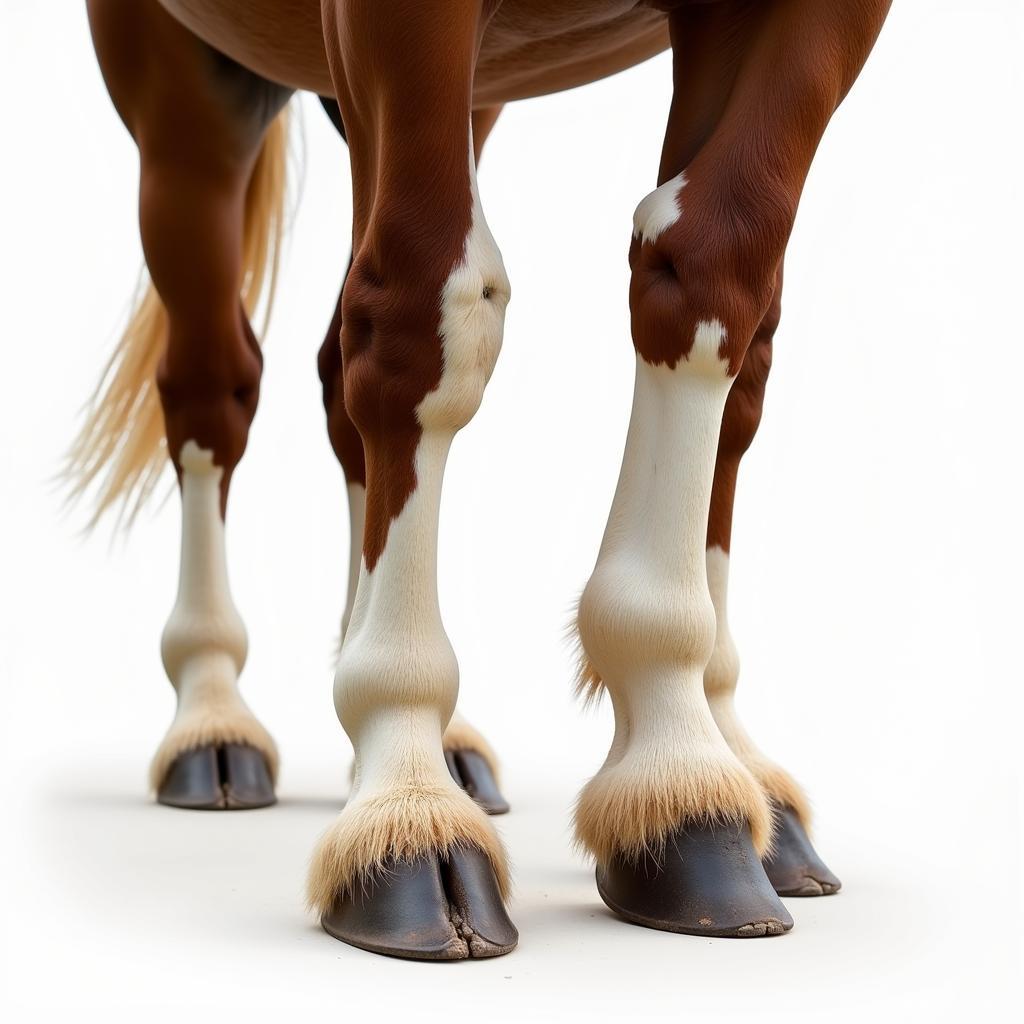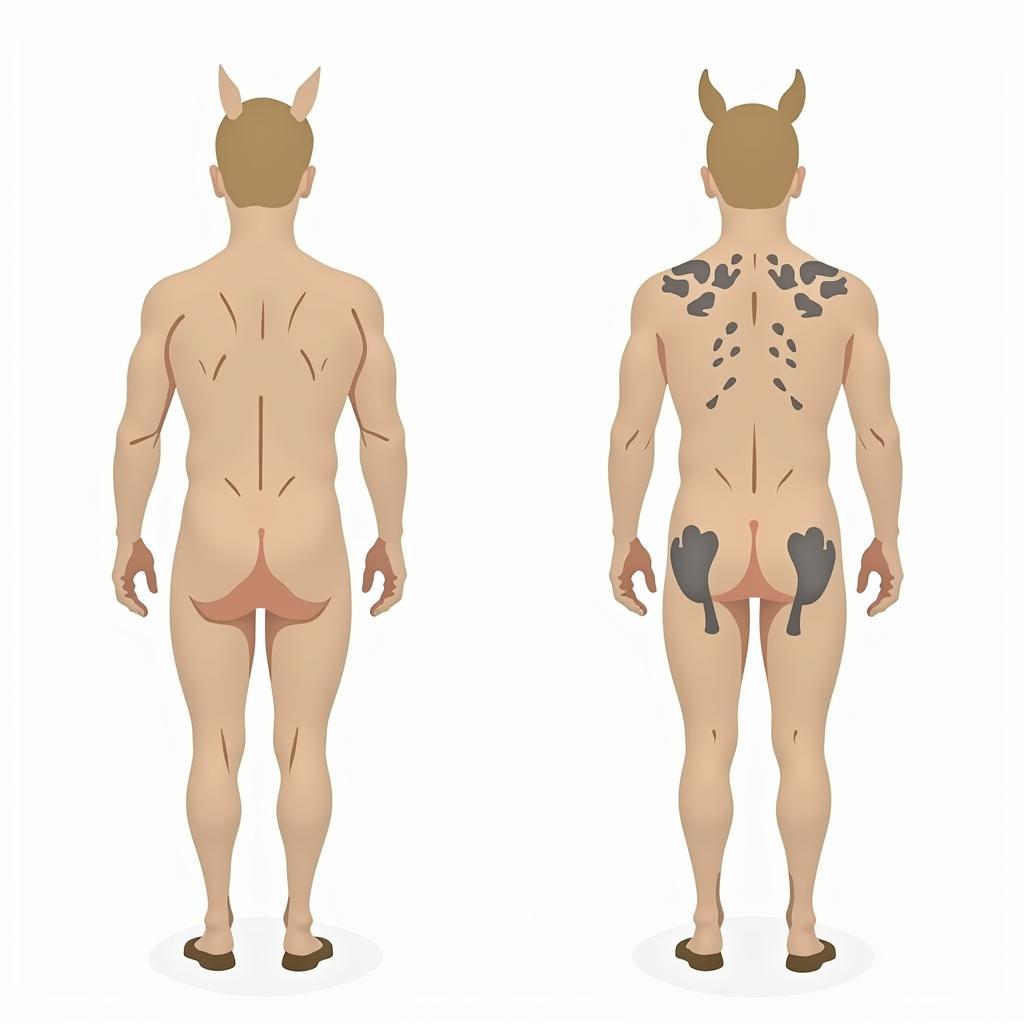Horse Confirmation, the physical form and structure of a horse, is a critical factor influencing its performance, soundness, and overall well-being. Whether you’re a seasoned equestrian or a novice horse owner, understanding the principles of good confirmation is essential for selecting, training, and caring for your equine companion. This knowledge empowers you to identify potential weaknesses, predict performance capabilities, and make informed decisions regarding breeding, training, and management.
Evaluating Horse Confirmation: A Comprehensive Guide
Assessing horse confirmation involves a systematic evaluation of various body parts and their relationships to each other. This isn’t just about aesthetics; it’s about understanding how the horse’s structure affects its movement, balance, and predisposition to injury. A well-conformed horse will move efficiently and comfortably, while a poorly conformed horse may experience limitations in performance and be more susceptible to lameness. Let’s delve into the key aspects of horse confirmation.
The Importance of Balance and Proportion
Balance is paramount in horse confirmation. A well-balanced horse distributes its weight evenly across its legs, allowing for fluid movement and reduced stress on joints. This balance is reflected in the proportions of the body, from the length of the neck and back to the angulation of the legs. Imagine a horse with a disproportionately long back and short legs; this imbalance could lead to strain on the back and difficulty maintaining a comfortable gait.
You might consider a horse breed DNA testing kit to gain a deeper understanding of your horse’s breed-specific conformation tendencies.
Analyzing the Head and Neck
The horse’s head and neck play crucial roles in balance and movement. A well-shaped head, with clear nostrils and bright eyes, indicates good health and respiratory function. The neck should be well-set on the shoulders, allowing for proper flexion and extension, essential for balance and collection. A short, thick neck can restrict movement, while an excessively long, thin neck may weaken the horse’s overall structure.
Assessing the Legs and Feet
The legs and feet are arguably the most important aspects of horse confirmation, as they bear the horse’s entire weight and propel it forward. The angles of the joints, the length and shape of the bones, and the quality of the hooves all contribute to the horse’s soundness and athletic ability. Straight legs, for instance, can increase the risk of concussion-related injuries, while overly sloped pasterns can lead to strain on tendons and ligaments.
If you’re interested in breeding, understanding confirmation is crucial. Learn more about horse hand breeding.
 Horse Confirmation: Legs and Feet
Horse Confirmation: Legs and Feet
The Importance of the Back and Loin
The back and loin connect the forehand and hindquarters, transmitting power and influencing the horse’s ability to collect and engage its hindquarters. A strong, well-muscled back is essential for carrying a rider and performing athletic maneuvers. A weak or poorly conformed back can lead to back pain, lameness, and difficulty in performing certain movements.
Confirmation and Discipline
Different disciplines require specific conformational traits. A dressage horse, for example, benefits from a long, sloping shoulder and a powerful hindquarter, while a jumper needs a shorter, more upright shoulder for greater power over fences. Understanding these discipline-specific requirements is essential for selecting a horse that is suited to its intended purpose. You can find more information on specialized horse products at Wilkers Custom Horse Products.
 Horse Confirmation: Discipline-Specific Traits
Horse Confirmation: Discipline-Specific Traits
Common Horse Confirmation Faults
While no horse is perfectly conformed, certain faults can significantly impact performance and soundness. These can range from minor deviations to more serious structural defects. Recognizing these faults is crucial for making informed decisions about a horse’s suitability for various activities.
- Base Narrow: When the horse’s legs are closer together at the feet than at the chest.
- Toe-in (Pigeon-toed): When the toes point inwards.
- Toe-out (Splayfooted): When the toes point outwards.
- Over-at-the-knee: When the knee is positioned too far forward.
- Calf-kneed: When the knee is positioned too far back.
Conclusion: Prioritizing Horse Confirmation for a Healthy and Successful Partnership
Horse confirmation is more than just a matter of aesthetics; it is fundamental to the horse’s health, soundness, and performance. By understanding the principles of good confirmation, you can make informed decisions about selecting, training, and caring for your equine partner. Whether you’re looking to purchase a Fhana horse for sale or simply want to enhance your knowledge of equine anatomy, a thorough understanding of horse confirmation is invaluable.
FAQ
- What is the most important aspect of horse confirmation? Balance and proper proportions are crucial.
- How does confirmation affect a horse’s performance? It influences movement, balance, and predisposition to injury.
- Can confirmation faults be corrected? Some minor faults can be managed with proper farriery and training, but major structural defects are often permanent.
- How can I learn more about evaluating horse confirmation? Consulting with experienced equine professionals, such as veterinarians and farriers, can provide valuable insights.
- Are there breed-specific confirmation standards? Yes, different breeds have varying ideal conformations.
- How does confirmation relate to lameness? Poor confirmation can predispose a horse to various lameness issues.
- Why is understanding horse confirmation important for breeding? Selecting breeding stock with good confirmation can improve the chances of producing sound and athletic offspring. If you are breeding mini horses, be sure to familiarize yourself with the gestation for mini horses.
For any assistance, please contact us at Phone Number: 0772127271, Email: [email protected], or visit our address: QGM2+WX2, Vị Trung, Vị Thuỷ, Hậu Giang, Vietnam. We have a 24/7 customer service team available to help.